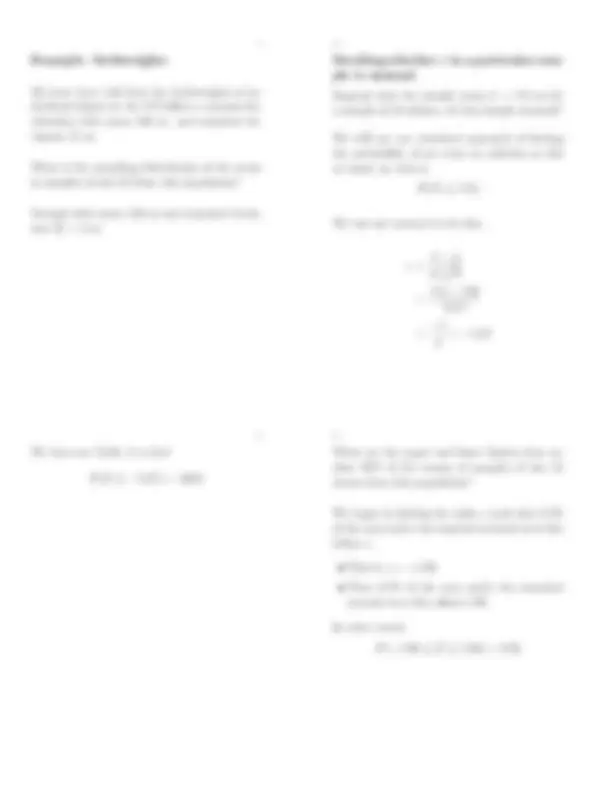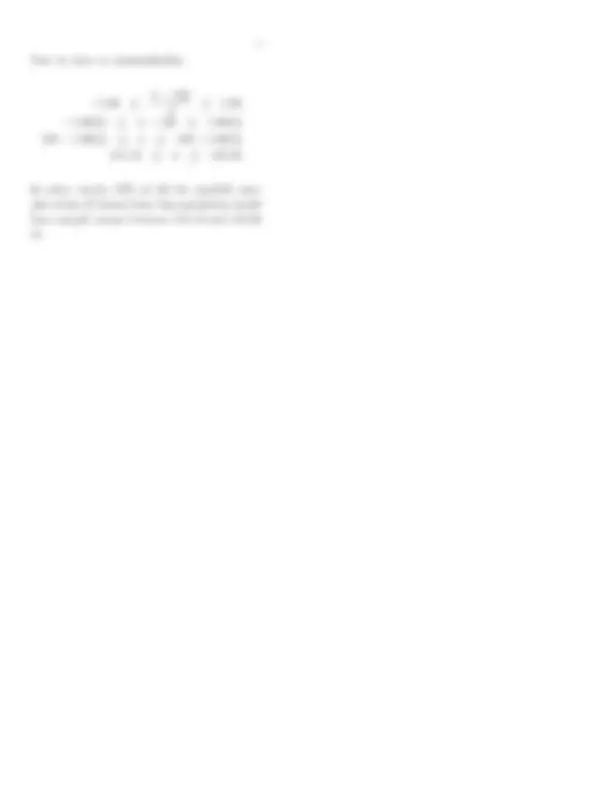




Study with the several resources on Docsity

Earn points by helping other students or get them with a premium plan


Prepare for your exams
Study with the several resources on Docsity

Earn points to download
Earn points by helping other students or get them with a premium plan
Community
Ask the community for help and clear up your study doubts
Discover the best universities in your country according to Docsity users
Free resources
Download our free guides on studying techniques, anxiety management strategies, and thesis advice from Docsity tutors
Material Type: Notes; Professor: Cowles; Class: 22S - Statistical Methods and Computing; Subject: Statistics and Actuarial Science; University: University of Iowa; Term: Spring 2008;
Typology: Study notes
1 / 4

This page cannot be seen from the preview
Don't miss anything!



Statistical Methods and Computing
Sampling Distributions
Lecture 11 Mar. 5, 2008
Kate Cowles 374 SH, 335- kcowles@stat.uiowa.edu
Sampling distributions Suppose our sample size was 10.
What can we say about ¯x from a sample of size 10 as an estimate of μ?
We can get an idea of how good an estimator ¯x is likely to be by asking ”What would happen if we took many samples of 10 subjects from this population?”
3
To answer this question, we would like to
4 Simulating the sampling distribution of x ¯
In practice, it is too difficult and expensive to draw many samples from a large population such as all adult Chinese males. But we can imitate random sampling by using a computer to do simulation.
In this way we can study the distribution of sam- ple means.
The sampling distribution of a statistic is the distribution of values taken by the statistic in all possible samples of the same size from the same population.
Our simulated distribution is only an approxi- mation to the true sampling distribution, but it gives us an idea of what it would look like.
The mean and standard deviation of x¯
Let ¯x be the sample mean of a simple random sample of size n drawn from a large population with mean μ and standard deviation σ.
7
The central limit theorem
We have described the center and spread of the sampling distribution of ¯x. What about its shape?
The shape depends on the shape of the popula- tion distribution.
Special case:
8 The Central Limit Theorem says that
Now we have to unstandardize
x¯ − 120 3
− 1 .96(3) ≤ x¯ − 120 ≤ 1 .96(3) 120 − 1 .96(3) ≤ x¯ ≤ 120 + 1.96(3)
In other words, 95% of all the possible sam- ples of size 25 drawn from this population would have sample means between 114.12 and 125. oz.